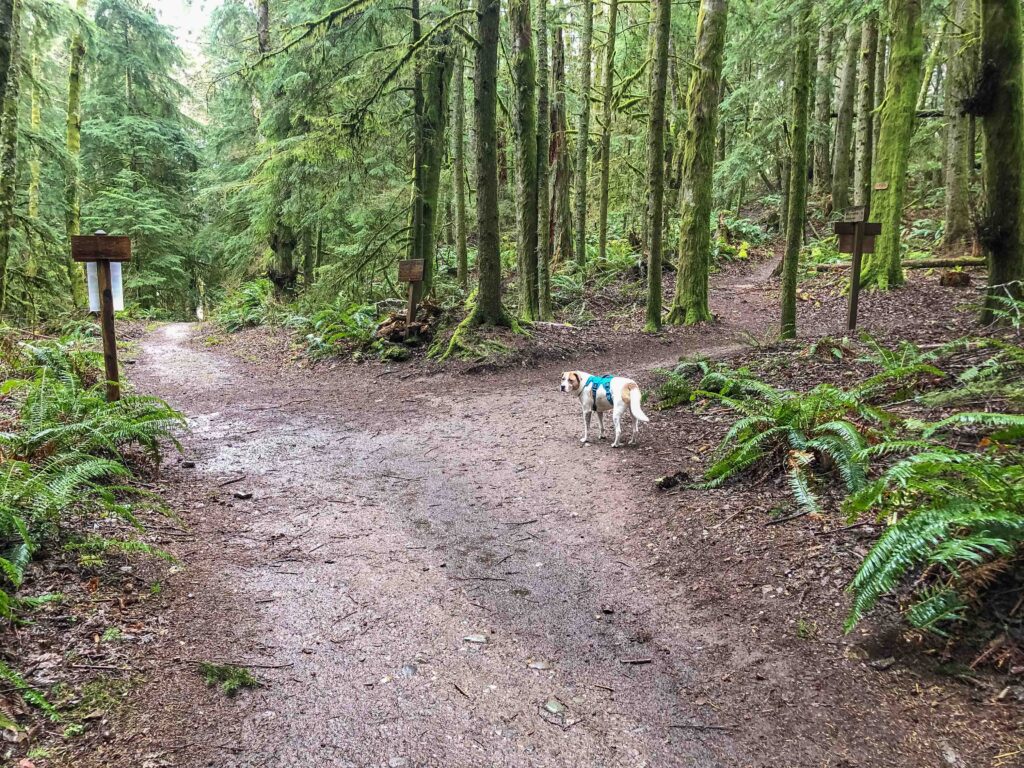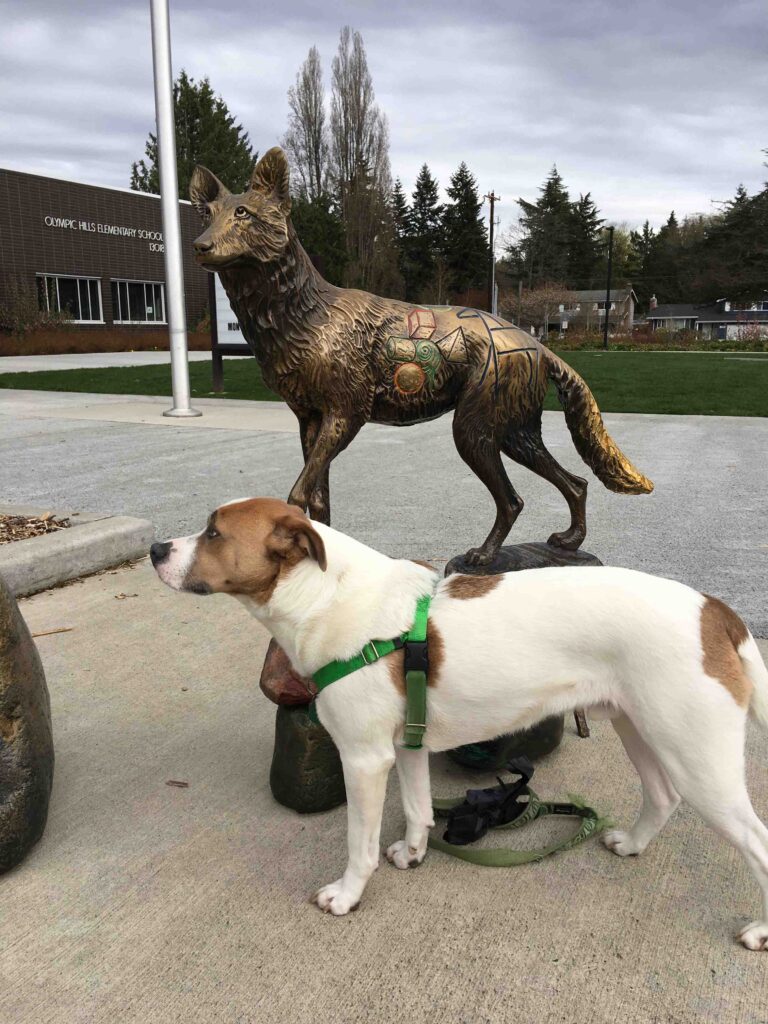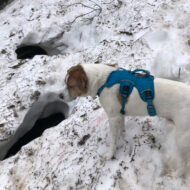On this week’s hike along Margaret’s Way on Squak Mountain, my hiking buddy and I discussed goals. I described the difference between process goals and outcome goals. If you have a particular goal that you never quite seem to reach, it could be that focusing on process goals could better serve you. Let’s take a closer look.

Intentions Links
One important note before I dive in: If you’ve been following my blog for a while, you may know that I prefer to write about “intentions” rather than “goals”. To me, the word has a kinder, gentler, less guilt-provoking feeling to it. Less emotional baggage. Here are several posts on setting intentions from the past year that you might find helpful.
How To Set Intentions for the New Year January 2023
Mt. Washington: How To Set Intentions May 2023
Murky Middle: How to Follow Through on Intentions June 2023
How to Grow a Hiking Practice on Squak Mountain January 2024

Process Goals vs. Outcome Goals
Whether you use “intention” or “goal” the result is similar. Onward. Outcome goals are those results you’re striving for, like finding a life partner, landing a dream job, or publishing a book. Focusing solely on outcome goals can cause anxiety, lack of control, and demotivation if they seem impossible to reach. What’s more, outcome goals often neglect the journey and can lead to dissatisfaction regardless of your achievement.
Process goals, on the other hand, are the bite-sized actions you take consistently that are directed toward your goal. Focusing on process goals leads to increased motivation, a greater sense of accomplishment, and empowerment. Stringing small successes together leads to positive momentum and helps you get unstuck.
The three outcome goals I will use to illustrate how process goals work are the following:
- Reaching a certain weight
- Climbing X mountain
- Being happier

Keep in Mind SMART Goals
Whether you embrace process goals or outcome goals, make sure each of your goals is a SMART goal. Make each goal specific, measurable, action-oriented, realistic, and time-stamped.
Having a clear outcome goal is like knowing the endpoint, your destination on a map. But even airline pilots are off-course the majority of the time. Their process goals keep them on track so they arrive at the right airport.
It is far easier — not to mention more self-loving — to focus on what we can control than to worry about those we cannot. We have zero control over the weather, other people’s opinions or comments, or politics. But we can control where we choose to live and visit, what we make other’s thoughts mean to us, and what news station we listen to.
THINK ABOUT THIS:
- Discover your underlying WHY. What would accomplishing your goal get you or do for you?
- How would your life be different if you reached your goal? If you know you run on adrenaline and want to climb Mt. Rainier purely for the thrill of it, will that be enough, or will it just be one in a series of conquests?
- What are you really seeking, and why?

Process Goals for Reaching X Weight
Imagine that your goal is to lose 20 pounds in three months by sticking to your exercise and eating plan. While it is specific, measurable, action-oriented, realistic, and time-stamped, it is still a little nebulous. The uncertainty comes from “exercise and eating plan.” We all know that moving more and eating less or better should take us to weight loss. But will your exercise and eating plan be the right one?
What if you focused, instead, on process goals? What do people at their setpoint weight do? A new process-goal plan might look something like this:
- Drink a 10-ounce glass of water first thing in the morning, one with each of three meals, and one before bed. 50 ounces, tied to specific actions in the day so they’re easier to remember.
- Move the body at least thirty minutes a day outside in whatever way brings me joy.
- Eat a palm-sized portion of protein at every meal or snack opportunity.
- Shut off electronics 45 minutes before bedtime and go to sleep at the same time each night.

By nailing down the habits a healthy person has, and instilling action items specific to reaching that goal, you will feel better, maintain lean muscle mass, move more comfortably, alleviate stress, reset your Circadian rhythms, and direct yourself naturally and organically toward your outcome goal.
Process Goals for Climbing Mt. Rainier
If your goal is to climb Mt. Rainier, the outcome goal is reaching the summit and coming back down safely. What would the process goals look like?
- Carry a pack weekly, increasing mileage, elevation gain, and pack weight no more than 10% per week
- Twice a week, strengthen the legs, back, and core specific to carrying a heavy pack for three straight days over challenging terrain
- Take a skills training course or find a professional to teach you about knots, rope handling, crampon use, and navigation
- Practice fueling (protein and carbs 100 calories each) and hydrating (four ounces of water or electrolyte solution) every hour on conditioning hikes
- Ask guides, your coach, or rangers about the best window of opportunity to climb to increase the chance of having favorable weather, then practice in all conditions so you’re ready for anything
You can see that the process goals above are completely within your control. See if you can think of five more process goals you might do to help increase the likelihood of reaching the outcome above.

Process Goals for Being Happier
To come up with process goals for being happier, first, identify what brings you joy. Joyful Rejuvenation is one of the seven pillars of wellness I coach active, stressed women on at our new health and wellness company, Thrive Clues.
Please note that “being happier” is nebulous. Without more context, you could achieve it simply by finding a dollar bill on the ground. It is also highly individual and based on your values, personality, and identity.
While one person might define “happiness” as having material wealth and the ability to retire at age 50, someone else might define it as working until age 100 because they love it so much, as long as they can hike once a week with their dog.

Here are a few process goals for being happier that appear to be universal:
- Have consistent, regular social contact with people who bring you joy and support you
- Move the body at least 30 minutes a day in whatever activity brings you pleasure
- Manage your stress by planning on doing something you enjoy daily
Final Thoughts
We learn best from each other’s experiences and our own mistakes. If you would like to share what has worked for you regarding process goals, please share in the comments below. A few parting thoughts:
- Identify specific actions that are within your control.
- Break down each goal into smaller, manageable tasks. This will enhance the clarity of what you’re going to do, when you will do it, and it will help you track your progress.
- Enlist the help of an accountability partner, friend, or coach who will support your efforts.

